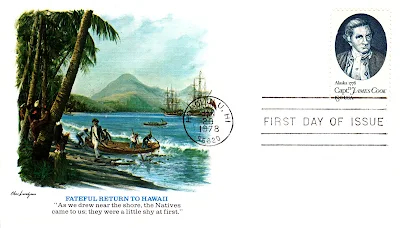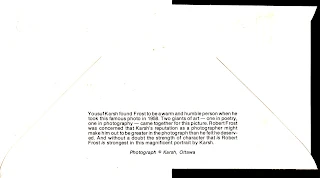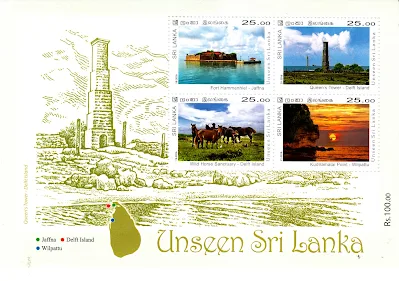Myriad philatelic content from around the world, such as first day covers, block stamp sets, maxicards, may be found at this website.
Monday, August 30, 2021
Correios de Portugal 125 Anniversary of Railways in Portugal
La Poste Algerie Islamic Architecture
Sahara Espanol Correos (Pro-Infancia) Cervantes and Don Quixote
La Poste France World Cup Alpine Ski Champion Jean-Claude Killy
Pochta Rossii 100th Anniverary of Andrei Dmitrievich Sakharov
Thursday, August 26, 2021
La Poste France Antoine de Saint Exupery
Antoine de Saint-Exupéry died in 1944 while flying a Lockheed P-38 Lightening on a reconnaissance mission over the Mediterranean. Hence the image featured in this cachet.
Wednesday, August 25, 2021
USPS 200th Annversary of Captain James Cook's Visits to Hawaii and Alaska
USPS 100th Birth Anniversary of American Poet Robert Frost
Singapore Post Covid-19 Series II - "A Tribute to Frontline Heroes"
Specifications
Date of Issue: 6 August 2021
Denominations: 1st Local x 2, 2nd Local, 40¢, 50¢, 60¢, 70¢, 90¢, $1.15, $1.40
Stamp Sizes: 33mm x 38mm
Miniature Sheet Size: 140mm x 75mm
Perforation: 13
Paper: Unwatermarked
Printing Process: Offset Lithography (Stamps)
Printer: Secura Singapore Pte Ltd
Sheet Content: 10 stamps per sheet
Designer: Agnes Ta
Isle of Man "Carry Us Through" Covid-19 Series
Source: Isle of Man Post
Friday, August 20, 2021
Deutsche Bundespost Carl Schurz in Conjuntion with U.S. Bicentennial
After the war, Schurz established a newspaper in St. Louis, Missouri, and won election to the U.S. Senate, becoming the first German-born American elected to that body. Breaking with Republican President Ulysses S. Grant, Schurz helped establish the Liberal Republican Party. The party advocated civil service reform and opposed Grant's efforts to protect African-American civil rights in the Southern United States during Reconstruction. Schurz lost his own 1874 re-election bid and resumed his career as a newspaper editor.
After Republican Rutherford B. Hayes won the 1876 presidential election, he appointed Schurz as his Secretary of the Interior. Schurz sought to make civil service based on merit rather than political and party connections and helped prevent the transfer of the Bureau of Indian Affairs to the War Department. Schurz moved to New York City after Hayes left office in 1881 and briefly served as the editor of the New York Evening Post and The Nation and later became the editorial writer for Harper's Weekly. Although he opposed William Jennings Bryan for president in 1896, four years later he supported William Jennings Bryan's anti-imperialist position.
His wife, Margarethe Schurz nee Meyer, opened the first kindergarten in the United States.
He remained active in politics until his death at age 77, in 1906.
Source: Wikipedia
India Post Swachhta Pakhwada Campaign
Additionally, all Postal Units, Post Offices and Mail Offices undertook the campaign. The Pakhwada campaign commenced on 10 November 2019 by displaying “National Post Day” banner on main gate of Postal Offices and organising a debate competition on subject relate to “India Post”.
As per the directive of Government of India for creating awareness among the public about the Swachhta Abhiyan and preserving of water, all post-related units also carried out painting of letter boxes, cleanliness of post offices, mail offices and postal colonies, weeding out old records, shramdaan by staff members, planting trees, essay competition on Swachh Bharat Mission, and awareness to "Discourage the use of Plastic Carry Bags".
Thursday, August 19, 2021
USPS Comic Strip Classics
USPS in 1995 issued a series of stamps entitled "Comic Strip Classics" to honor the centennial of the newspaper comic strip. The 20 stamps all are listed in the Scott catalogue as No. 3000 for a pane and 3000a through 3000t for the individual stamps. The stamps were printed on both sides: comic strip illustrations of the front; text about each strip on the reverse side.
The series was restricted to strips created before 1950, and the series featured drawings of comic-strip characters with their logos. The stamps were arranged in five tiers with four stamps to a tier. The featured strips are listed here in the sequence as published:
The Yellow KidThe Katzenjammer Kids
Little Nemo in Slumberland
Bringing Up Father
Krazy Kat
Rube Goldberg’s Inventions
Toonerville Folks
Gasoline Alley
Barney Google
Little Orphan Annie
Popeye
Blondie
Dick Tracy
Alley Oop
Nancy
Flash Gordon
Li'l Abner
Terry and the Pirates
Prince Valiant
Brenda Starr, Reporter
Source: wikipedia
Australia Post Golden Days of Radio
Netherlands Antilles Post Trans World Radio Bonaire
Monday, August 16, 2021
Sri Lanka Post "Unseen Sri Lanka"
SRI LANKA POST in 2016 issued 12 first day cover postal stamps entitled "Unseen Sri Lanka" which featured the natural beauty to be found in Sri Lanka. Three souvenir sheets were issued as well, each with artwork and a map pinpointing the location of each site. Each stamp had a denominational value of LKR 25.00.
Souvenir Sheet No. 1
- Fort Hammenthiel - Jaffna
- Queen's Island - Delft Island
- Wild Horses Sanctuary - Delft Island
- Kudiramalai Point - Wilpattu
- Sir Frederick North's Bungalow - Arippu, Mannar
- Sand Dunes - Kawtharimunai, Poonerwyn
- Mini World's End - Pitamaruwa, Madulsima
- Lighthouse and Old Pier - Talaimannar
Souvenir Sheet No. 3
- Bambarakanda Falls - Kalupahana, Balangoda
- Hummanaya - Kudawella, Dikwella
- Govinda Hela - Siyaambalanduwa
- Senanayaka Samudraya - Inginiyagala
Sri Lanka Post Let's Rise Up Defeating Covid-19
Sri Lanka Post 50th Anniversary of Sri Lanka Broadcasting Corporation
On 5th January 1967 the Department of Broadcasting was converted to a government Corporation by way of Act No.37 of 1966.
On 22nd May 1972 with the enactment of the first Republican Constitution, the Ceylon Broadcasting Corporation was renamed as the Sri Lanka Broadcasting Corporation.
On 5th January 2017 the SLBC celebrates its Golden Jubilee by relocating its core functional Divisions in a new Administrative Building to be declared open by H.E. President Maithreepala Sirisena and the Hon. Prime Minister Ranil Wickramasinghe. A major Project aiming to renovate SLBC's studio complex was to have been completed by the same date.
Source: Sri Lanka Broadcasting Corporation and Philatelic Bureau - Sri Lanka
Thursday, August 12, 2021
Brasil Correio Lufthansa Flight Brazil to Germany
Three Brazilian stamps are featured on this envelope:
1. "Cabeça de Homem" (A Man's Head) was painted by Brazilian artist Victor Meirelles de Lima (1832-1903) who is best known for his works relating to his nation's culture and history.
Tuesday, August 10, 2021
Nippon Post Philatelic Week Issue -- Kanbun Beauty
First day: April 20, 1978
Denomination: 50 yen & 50 yen (se-tenant)
Design: Kanbun Beauty
Lay-Outer: Yoshiaki Kikuchi
Color: Multi-color( 6 colors)
Printing: Photogravure
Size: 30 x 42 mm, vertical, each
Paper: White gravure paper, unwmkd
Sheet: i0 stamps (Z x S ),5 sets
lmprint: Printing Bureau, Ministry of
Finance, under the 1 Oth
Quantity: 47,000,000 (23,500,000 sers)
Nippon Post XVIII Olympiad in Tokyo 1964
Monday, August 9, 2021
Hellenic Post XXXII Olympics in Tokyo
Russian Post 100th Birth Anniversary of Soviet WWII Heroes (Married Couples)
RUSSIAN POST in 2021 issued a series of 100th birth anniversary stamps of Soviet WWII heroes, chiefly the couples A.F. Solomatina and L.V. Litvyak and S.I. Kharlamov and N.V. Popova. Shown here are two first day covers of these couples.
Lidia Litvyak (nicknamed White Lily or White Rose) met Alexei Solomatin, her future husband, in the winter of 1943 when she was transferred to the 296th Aviation Regiment. Their family life consisted of encounters between missions and did not last long, as both died in combat missions. Litvyak was called the "White Lily of Stalingrad" in Soviet press releases; the white lily flower may be translated from Russian as Madonna Lily. She has also been called the "White Rose of Stalingrad" in Europe and North America since reports of her exploits were first published in English.
Nadezhda Popova and Semyon Kharlamov first met in August 1942, She returned to the unit after losing her plane during a combat mission, and he went to hospital after being wounded. By the end of the war, they had several chance encounters and eventually married shortly thereafter.
Source: Wikipedia
Russian Post 100th Birth Anniversary of Top Soviet World War II Ace
Source: Wikipedia
Sunday, August 8, 2021
North Borneo State Stamps (1945-1947)
Japanese Occupation Stamps of Malaya (1944-1945)
Tuesday, August 3, 2021
USPS Silent Screen Stars
USPS in 1994 honoured the Silent Screen Stars Theda Bara, Zasu Pitts, Clara Bow. Harold Lloyd, Charlie Chaplin, Lon Chaney, Rudolph Valentino, John Gilbert and the Keystone Cops on postage stamps. The stamps were designed and drawn by Al Hirschfeld, and were issued in San Francisco, California.
Theda Bara (1885-1955) was a prominent silent film star of the early twentieth century. Bara is most well known for her role as a femme fatale, also known as a seductress. She played the character of the femme fatale for many of her prominent movies, including Cleopatra and Carmen. However, Theda Bara also enjoyed exploring different roles she could play with the characters she portrayed. Because of her iconic performances as a seducing woman, Theda Bara is remembered as one of the best actresses within silent film.
The Keystone Film Company’s troupe of comic actors arrived in Hollywood the same day as the town’s annual Shriner parade. Seizing on the opportunity, Mack Sennett, the Keystone’s director, sent his star comedienne Mabel Normand into the parade. Clutching a baby doll, she began searching the ranks of Shriners for the child’s supposed father. In hot pursuit was Ford Sterling, playing the part of Mabel’s irate, two-timed husband. When a brawl erupted between Sterling and an embarrassed Shriner, the police came charging in to break it up. Meanwhile Sennett, who had set up his camera, captured the entire ruckus on film and sent it off to New York as the first Keystone comedy. master of comic timing, Sennett used this formula of spontaneity and controlled confusion to create more than 1,000 short comedies.
Zasu Pitts (1889-1963) was another important silent film actress. One of Zasu Pitts most well known silent films was All Quite on the Western Front. Although she began her career in silent movies, Zasu Pitts transitioned to talking movies in the 1930’s and primarily performed in films with her comedic counterpart, Thelma Todd. Pitts had an extremely successful career on both the stage and the screen and she continued to act as late as the 1960’s. Because of her successful transition from silent movies to the “talkies” of the mid-twentieth century, Zasu Pitts is remembered as a remarkable and versatile actress.
Harold Lloyd (1893-1971) was a close rival of Charlie Chaplin and Buster Keaton, He was one of the most popular comedians of the silent film era. A member of Mack Sennett’s comedy troupe, he experimented with various comic characters before creating the role of “Harold.” By 1918, the white-faced man in horn-rimmed glasses and straw hat had become Lloyd’s trademark. The first comedian to use physical danger as a source of laughter, he was known as the screen’s most daring star, often performing his own stunts. In his 1923 film Safety Last, he dangled from the hands of a clock several stories above a busy city street. In Girl Shy (1924) he took a thrilling ride atop a runaway streetcar. And in The Freshman (1925) - one of the most successful of all silent films - he stood in for the football team’s tackling dummy. Although his peak of popularity was during the silent film era, Lloyd made numerous sound motion pictures as well. In 1952 he was honored with a special Academy Award for his contribution to motion picture comedy.
 Clara Bow (1905-1965) was perhaps the most influential female actress of silent film. She achieved national fame in the 1920s with her roles as a seductress and flapper in silent and talking films. Bow’s revealing clothes and spirited character in her films, greatly influenced American women’s fashion and societal roles during the 1920s. Clara Bow is remembered by American filmmakers to this day for her revolutionary effect on American women and society as a whole.
Clara Bow (1905-1965) was perhaps the most influential female actress of silent film. She achieved national fame in the 1920s with her roles as a seductress and flapper in silent and talking films. Bow’s revealing clothes and spirited character in her films, greatly influenced American women’s fashion and societal roles during the 1920s. Clara Bow is remembered by American filmmakers to this day for her revolutionary effect on American women and society as a whole. Buster Keaton's (1895-1966) stoic manner and poker face was as familiar to movie-goers of the 1920s as Charlie Chaplin’s baggy trousers and derby hat. Born Frank Joseph Keaton, he began performing in his parents’ vaudeville act as the “Human Mop” when he was only four. A zany combination of acrobatics and miming, their act, known as “The Three Keatons,” helped him develop his life-long trademark - a never-smiling face. Following a successful stage career, Keaton entered film making in 1917. Creating some of the most elaborate gags in silent film history, his movies were both harrowing and hilarious - usually centering on his collision with natural disasters and mechanical monsters. But whatever befell him, Keaton’s classic deadpan character “The Great Stone Face” never showed fear or alarm. A writer, director, and actor, he produced and starred in 19 short films and 10 full-length features, including such masterpieces as The Navigator (1924), The General (1926), and Steamboat Bill, Jr. (1928).


















































